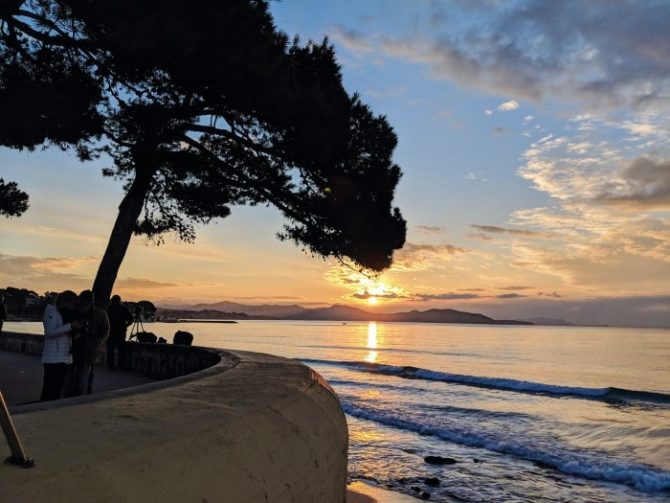Le Dernier Mot: On the Trail of the Wholesome Pine
Kristin is on a mission to make tea from a tree… but is it safe?
I’m no tree hugger but recently a certain pin parasol swept me up into a vortex of emotion. It began after a few voisins began tearing down some 300-year-old parasol pines in our neighborhood – quel scandale! – and it all ended in my kitchen, in a screwball attempt to juice pine needles.
This sudden obsession with evergreens came while researching pine needle tea, of all things. Stumbling upon a story about French navigator Jacques Cartier, I read that in 1536, after his ship became stuck in frigid North American waters, his sailors developed a mysterious illness. Spotted, toothless and on Death’s bed, they had le scorbut – brought on by an extreme vitamin C deficiency. An encounter with the Iroquois Indians, who shared a magical decoction made from a tree known as the arborvitae, cured the crew within six days (thanks to the ascorbic acid in it). It is still unclear exactly which ‘tree of life’ they used, but the article included a recipe for a certain thé aux aiguilles. It seemed a good idea to prepare this miracle infusion as winter (and cold/flu season) will be here before we know it. I began to wonder which trees in our area could be used for such a tea. Would parasol pines do the trick? Were they safe?
Stone pines must be comestible – they’re what give us pine nuts! I remember a glorious sunny day along the coast, between Saint-Cyr-sur-Mer and La Ciotat, harvesting these delicious seeds at a friend’s place. Seated beneath a majestic umbrella pine, our husbands were shelling sea urchins when we noticed some ripe pine cones scattered on the ground. Soon we had enough pignons de pin to make cookies. The moon-shaped biscuits known as croissants aux pignons are traditional here on the Med, look for them in Sanary-sur-Mer, Bandol, Cassis… Miam, miam!
Still, even if the seeds were edible, that didn’t mean the needles were. An internet search on pin parasols led me, like Cartier’s sailors, off course once again! Rattled now by an article about why these pines are being destroyed in Italy (they were planted during Mussolini’s reign which makes them, to some, a symbol of fascism), I wondered, is this why umbrella pines are coming down in our neighbourhood? More likely they were removed for safety reasons lest their massive, heavy branches fall on passers-by. This brings me back to that miracle cure. Having finally found the info I was looking for (our local pine needles are indeed OK to steep, just don’t consume them if you are pregnant!), I hurried into my kitchen for another experiment… Forget the wheat grass trend – pine needles are the new superfood!
In a fit of inspiration, I shoved the needles into my single-auger juicer and switched on the machine. That’s when I heard an abominable noise – Crick! Crack! Kaput! And just like that my pricey kitchen gadget was no more. If I told you I was hopping mad or fâchée, could we quickly wrap up this saga which began with sailors and tree-hugging and ended with fascism and fort emotion? After all, everyone needs a break (just ask my juicer)!
French Vocabulary
LE VOISIN= neighbour
LE SCORBUT= scurvy
THÉ AUX AIGUILLES= herbal tea
UNE INFUSION= herbal tea
LE PIGNON DE PIN= pine nut
LE BISCUIT= cookie
MIAM!= yum!
From France Today magazine
Read more of Kristin’s popular columns here
Share to: Facebook Twitter LinkedIn Email
More in history, pine needle tea, tea, trees
Leave a reply
Your email address will not be published. Required fields are marked *





